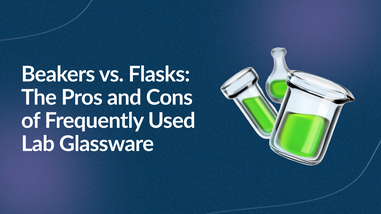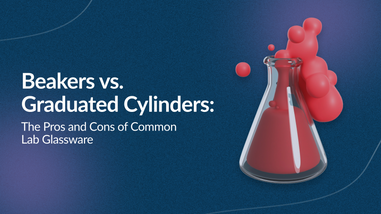- No products in the cart.
In the world of scientific research, maintaining precise temperatures is essential for conducting accurate experiments and analyses. Lab chillers play a crucial role in achieving and sustaining these optimal temperatures, making them indispensable assets in modern laboratories. In this comprehensive guide, we will explore the significance of lab chillers in scientific research, the different types available, and the myriad benefits they offer in ensuring reliable and reproducible results.
-
Understanding Lab Chillers: What Are They and How Do They Work?
Lab chillers are specialized cooling systems designed to regulate and control temperatures in laboratory equipment, such as analytical instruments, bioreactors, and incubators. These chillers utilize advanced refrigeration technology to remove heat from the equipment, ensuring that it maintains the desired temperature range.
The principle behind lab chillers involves the circulation of a refrigerant through a compressor, condenser, expansion valve, and evaporator. As the refrigerant moves through this cycle, it absorbs heat from the equipment, carrying it away to be dissipated outside the chiller. This continuous process allows for precise temperature control, crucial for various laboratory applications.
-
The Types of Lab Chillers and Their Applications
2.1. Recirculating Chillers
Recirculating chillers are one of the most common types used in laboratories. They are versatile, compact, and self-contained units that can provide cooling to multiple instruments simultaneously. These chillers are ideal for applications requiring consistent and stable temperatures, such as cell culture incubators, spectroscopy, and chromatography.

2.2. Water-cooled Chillers
Water-cooled chillers use water as the cooling medium instead of air. They are well-suited for high-heat load applications and are often preferred when a reliable and continuous cooling supply is essential. Water-cooled chillers are commonly used in laser systems, medical imaging equipment, and high-performance liquid chromatography (HPLC).
2.3. Air-cooled Chillers
Air-cooled chillers, as the name suggests, dissipate heat using air rather than water. They are more straightforward to install and do not require a separate water supply, making them a practical choice for laboratories with limited infrastructure. Air-cooled chillers are used in small-scale applications, climate chambers, and research centrifuges.
-
The Benefits of Lab Chillers in Research
3.1. Precise Temperature Control
Lab chillers offer precise and consistent temperature control, ensuring that experiments and analyses are conducted under stable and well-defined conditions. This accuracy is crucial for obtaining reliable results and ensuring reproducibility in research studies.
3.2. Protection of Sensitive Samples
In temperature-sensitive applications, such as biological assays and enzyme kinetics, lab chillers protect delicate samples from temperature fluctuations. Stable temperatures prevent damage to samples and maintain their integrity throughout the experimentation process.
3.3. Enhanced Instrument Performance
Lab instruments, such as analytical spectrometers and mass spectrometers, require optimal operating temperatures for peak performance. Chillers maintain the necessary temperatures, optimizing instrument sensitivity and accuracy.
3.4. Energy Efficiency
Modern lab chillers are designed with energy-efficient features, minimizing energy consumption and reducing operating costs. Their eco-friendly nature contributes to sustainable laboratory practices.
-
Best Practices for Using Lab Chillers
4.1. Regular Maintenance and Calibration
Frequent maintenance and calibration of lab chillers are crucial to ensure their accuracy and efficiency. Follow manufacturer guidelines for routine service, and schedule professional calibration when necessary.
4.2. Proper Installation and Ventilation
Place lab chillers in a well-ventilated area, away from direct sunlight or other heat sources. Adequate ventilation prevents the buildup of heat, ensuring the chiller operates optimally.
4.3. Monitoring and Alarms
Implement a monitoring system to track chiller performance and detect any abnormalities promptly. Alarms can alert lab personnel to potential issues, allowing for timely intervention and preventing disruptions to experiments.
Conclusion
Lab chillers are indispensable tools that significantly contribute to the success of scientific research. By providing precise temperature control, protecting sensitive samples, enhancing instrument performance, and promoting energy efficiency, lab chillers play a crucial role in ensuring reliable and reproducible results. Understanding the different types of lab chillers and best practices for their usage empowers researchers to optimize their laboratory processes and advance scientific knowledge with confidence and accuracy.
For over 40 years, Lab Pro Inc. has been committed to delivering the highest quality lab equipment such laboratory chillers, lab supplies, Excelta hand tools, reagents, distance learning kits, and cleanroom PPE apparel. Renowned by global medical device companies and laboratories, we ensure exceptional quality in every product. Contact us online or call 888-452-2776 to learn more. Discover top-notch lab supplies and elevate your experiments today!













































Thanks for sharing such a great information.. It really helpful to me.. I always search to read the quality content and finally i found this in you post. keep it up!